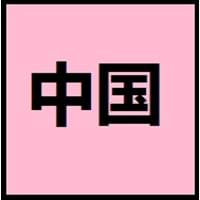Countries
Turkey, Uzbekistan
China, Hong Kong, Macau, Singapore, Taiwan
National Language
Afganistan, China, Kazakhstan, Kyrgyzstan, Russia, Tajikistan, Turkmenistan, Uzbekistan
China, Taiwan
Second Language
Not spoken in any of the countries
Republic of Brazil
Speaking Continents
Middle East
Asia
Minority Language
Not spoken in any of the countries
Indonesia, Malaysia
Regulated By
Not Available
Chinese Language Standardization Council, National Commission on Language and Script Work, Promote Mandarin Council
Interesting Facts
- Uzbek is officially written in the Latin script, but many people still use Cyrillic script.
- In Uzbek language, there are many loanwords from Russian, Arabic and Persian.
- Chinese language is tonal, since meaning of a word changes according to its tone.
- In Chinese language, there is no grammatical distinction between singular or plural, no declination of verbs according to tense, mood and aspect.
Similar To
Kazakh and Uyghur Languages
Not Available
Derived From
Not Available
Not Available
Alphabets in
Uzbek-Alphabets.jpg#200
Chinese.jpg#200
Scripts
Arabic, Cyrillic, Latin
Chinese Characters and derivatives
Writing Direction
Not Available
Left-To-Right, Horizontal, Top-To-Bottom
Thank You
Rakhmat
谢谢 (Xièxiè)
How Are You?
Qalay siz?
你好吗? (Nǐ hǎo ma?)
Good Night
Hayirli tun
晚安 (Wǎn'ān)
Good Evening
Hayirli kech
晚上好 (Wǎnshàng hǎo)
Good Afternoon
Hayirli kun
下午好 (Xiàwǔ hǎo)
Good Morning
Hayirli tong
早安 (Zǎo ān)
Sorry
Kechiring!
遗憾 (Yíhàn)
I Love You
Sizni sevaman
我爱你 (Wǒ ài nǐ)
Excuse Me
Iltimos! Menga qarang
劳驾 (Láojià)
Dialect 1
Tashkent
Mandarin
Where They Speak
Not Available
China, Malaysia, Singapore, Taiwan
How Many People Speak
Not Available
Where They Speak
Not Available
China, United States of America
How Many People Speak
Not Available
Where They Speak
Not Available
China, Malaysia, Singapore, Vietnam
How Many People Speak
Not Available
Second Language Speakers
Not Available
Native Name
أۇزبېك ﺗﻴﻠی o'zbek tili ўзбек тили (o‘zbek tili)
中文 (zhōngwén)
Alternative Names
Annamese, Ching, Gin, Jing, Kinh, Viet
Not Available
French Name
ouszbek
chinois
German Name
Usbekisch
Chinesisch
Pronunciation
Not Available
Not Available
Origin
9th–12th centuries AD
1250 BC
Language Family
Turkic Family
Sino-Tibetan Family
Subgroup
Turkic
Not Available
Branch
Southestern(Chagatai)
Not Available
Early Forms
Chagatay
No early forms
Standard Forms
Uzbek
Standard Chinese
Signed Forms
Not Available
Wenfa Shouyu 文法手語 ("Grammatical Sign Language", Signed Mandarin (Taiwan))
Scope
Macrolanguage
Individual
ISO 639 6
Not Available
Not Available
Glottocode
uzbe1247
sini1245
Linguasphere
No data available
79-AAA
Language Type
Living
Living
Language Linguistic Typology
Not Available
Subject-Verb-Object
Language Morphological Typology
Not Available
Analytic, Isolating
All Uzbek and Chinese Dialects
Most languages have dialects where each dialect differ from other dialect with respect to grammar and vocabulary. Here you will get to know all Uzbek and Chinese dialects. Various dialects of Uzbek and Chinese language differ in their pronunciations and words. Dialects of Uzbek are spoken in different Uzbek Speaking Countries whereas Chinese Dialects are spoken in different Chinese speaking countries. Also the number of people speaking Uzbek vs Chinese Dialects varies from few thousands to many millions. Some of the Uzbek dialects include: Tashkent, Afghan. Chinese dialects include: Mandarin , Wu. Also learn about dialects in South American Languages and North American Languages.
Uzbek and Chinese Speaking population
Uzbek and Chinese speaking population is one of the factors based on which Uzbek and Chinese languages can be compared. The total count of Uzbek and Chinese Speaking population in percentage is also given. The percentage of people speaking Uzbek language is 0.39 % whereas the percentage of people speaking Chinese language is 16.00 %. When we compare the speaking population of any two languages we get to know which of two languages is more popular. Find more details about how many people speak Uzbek and Chinese on Uzbek vs Chinese where you will get native speakers, speaking population in percentage and native names.
Uzbek and Chinese Language Codes
Uzbek and Chinese language codes are used in those applications where using language names are tedious. Uzbek and Chinese Language Codes include all the international language codes, glottocodes and linguasphere.





